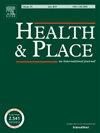Air pollution exposure and incidence of cardiometabolic diseases: Exploring the modifying role of dietary antioxidant intake in adults
IF 3.8
2区 医学
Q1 PUBLIC, ENVIRONMENTAL & OCCUPATIONAL HEALTH
引用次数: 0
Abstract
While the antioxidative potential of certain vitamins and minerals in cardio-protection has garnered increasing interest, their ability to attenuate associations between air pollution exposure and cardiometabolic diseases (CMDs) remains unexplored. This study examined the associations of air pollution (particulate matter including ultrafine particles (UFP), and nitrogen oxides, including NO2 and NOx) and six dietary antioxidants with incident non-fatal CMDs in 30,519 EPIC-NL study participants. Data on CMD incidence (total cardiovascular disease (CVD), acute myocardial infarction (AMI), coronary heart disease (CHD) and heart failure (HF)) and Type 2 Diabetes Mellitus (T2DM) diagnoses were obtained from medical registries. Annual average ambient concentrations of air pollutants at the participants’ baseline residential addresses were predicted using land use regression models. Dietary intake of antioxidants was assessed via a food frequency questionnaire. Multivariable Cox regression models were used to explore associations. Exposures to NO2 and UFP were associated with elevated HF risk (Hazard Ratio (HR) (95 % CI): 1.24 (1.00, 1.54) and 1.69 (1.04, 2.76), respectively). Higher beta-carotene intake was associated with reduced risk of total CVD and CHD incidence (HR (95 % CI): 0.94 (0.89, 0.99) and 0.92 (0.84, 0.99), respectively), whereas, in general, antioxidant intake was positively associated with incident T2DM. Interaction analyses indicated some variability in CMD risk by antioxidant intake, but none of these interactions remained significant after correcting for multiple comparisons. These findings indicate that the associations of air pollution with incident CMD do not differ by dietary antioxidant intake.
空气污染暴露与心脏代谢疾病的发病率:探讨成人膳食抗氧化剂摄入量的调节作用
虽然某些维生素和矿物质在心脏保护中的抗氧化潜力已引起越来越多的兴趣,但它们减弱空气污染暴露与心脏代谢疾病(cmd)之间关联的能力仍未得到探索。这项研究调查了30,519名EPIC-NL研究参与者的空气污染(包括超细颗粒(UFP)在内的颗粒物、氮氧化物(包括NO2和NOx)和六种膳食抗氧化剂与非致命性CMDs的关系。从医疗登记处获得CMD发病率(总心血管疾病(CVD)、急性心肌梗死(AMI)、冠心病(CHD)和心力衰竭(HF))和2型糖尿病(T2DM)诊断数据。使用土地利用回归模型预测了参与者基线居住地址的年平均环境空气污染物浓度。通过食物频率问卷评估抗氧化剂的膳食摄入量。采用多变量Cox回归模型探讨相关性。暴露于NO2和UFP与HF风险升高相关(95% CI分别为1.24(1.00,1.54)和1.69(1.04,2.76))。较高的β -胡萝卜素摄入量与降低心血管疾病和冠心病总发病率相关(HR (95% CI)分别为0.94(0.89,0.99)和0.92(0.84,0.99)),而总体而言,抗氧化剂摄入量与T2DM发病率呈正相关。相互作用分析表明,抗氧化剂摄入对CMD风险有一定的影响,但在校正多重比较后,这些相互作用都不显著。这些发现表明,空气污染与CMD事件的关联并不因膳食抗氧化剂摄入量而异。
本文章由计算机程序翻译,如有差异,请以英文原文为准。
求助全文
约1分钟内获得全文
求助全文
来源期刊

Health & Place
PUBLIC, ENVIRONMENTAL & OCCUPATIONAL HEALTH-
CiteScore
7.70
自引率
6.20%
发文量
176
审稿时长
29 days
期刊介绍:
he journal is an interdisciplinary journal dedicated to the study of all aspects of health and health care in which place or location matters.
 求助内容:
求助内容: 应助结果提醒方式:
应助结果提醒方式:


